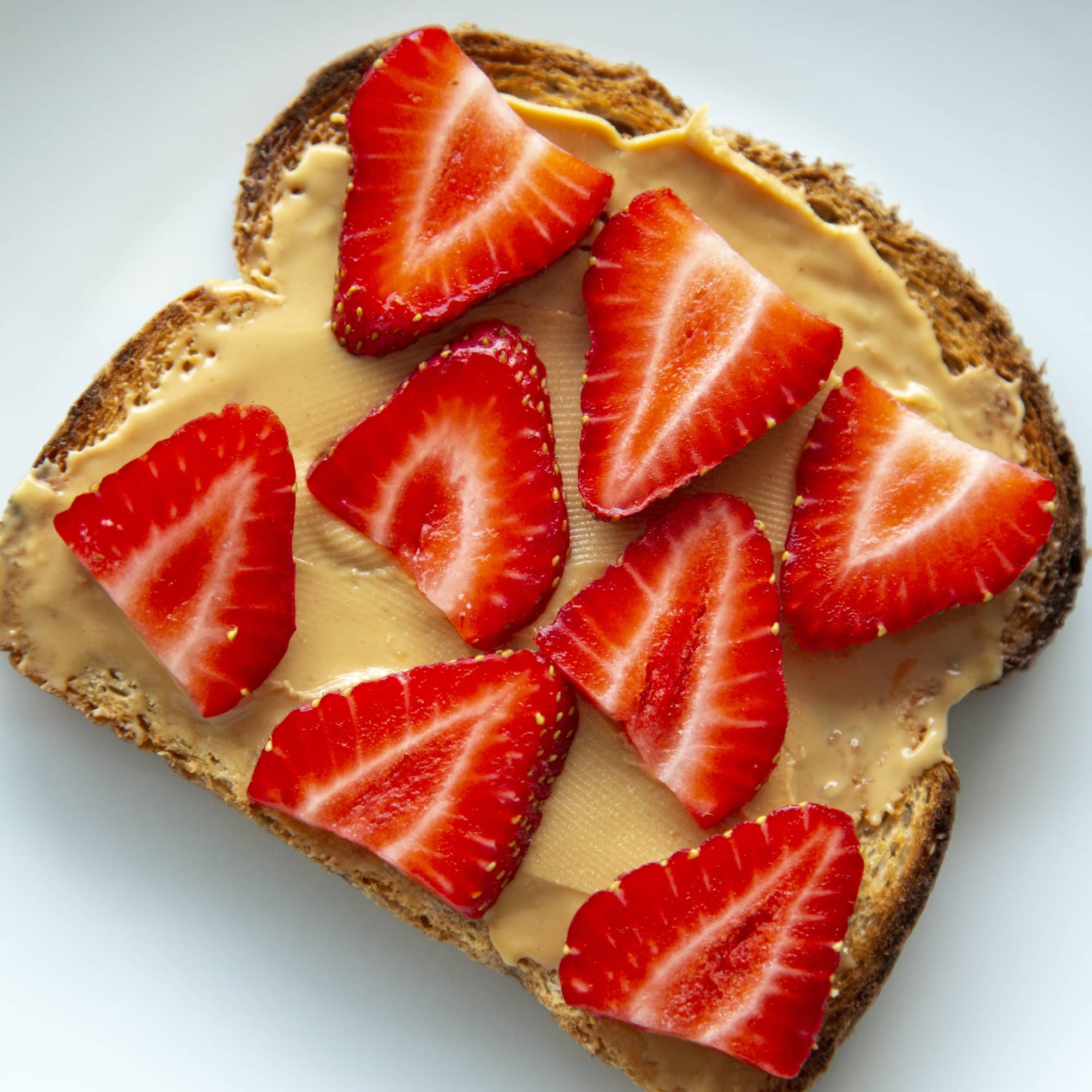
- POPSUGAR Australia
- Fitness
- Runner's Diet Tips From a Sports Dietitian
Runner's Diet Tips From a Sports Dietitian

Whether you’re a beginner runner clocking in a few kilometres a week, or, doing months of hardcore marathon training, you may be thinking a lot about the best running sneakers or how to prevent chafing. But don’t neglect to think about nutrition – how you fuel your body is essential in order to optimise performance and recovery. To help guide you, we spoke to sports dietitian Kristy Baumann, RD, who specialises in nutrition coaching for runners, to share the most important things to know about a runner’s diet.
The tips are pretty similar whether you’re running a little or a lot and follow general guidelines for eating a balanced diet. That said, fueling as a runner is very individualised, Baumann says. You have to consider food preferences, allergies or sensitivities, weekly mileage, workout intensity, age, and budget, just to name a few. (With that in mind, these tips are just that – tips. If you’d like more personalised guidance, don’t hesitate to reach out to a medical or nutrition professional.) Let’s dig in.
Basic Nutrition Tips For a Runner’s Diet
Start with the basics: Just because you’re running doesn’t mean you need to drastically rethink your eating style. In fact, a lot of Baumann’s initial guidance follows the general eating recommendations for most adults. For example, focus on eating balanced meals that include a variety of carbohydrates, protein, fats, and fibre from fruits and vegetables, Baumann says.
Eat carbs for energy – including bread, rice, pasta, and potatoes – and know that both whole and refined grains have their places in a runner’s diet. Incorporate animal proteins like meat and eggs (if you eat them) and plant-based proteins like tofu, tempeh, beans, and lentils.
Incorporate fats from nuts and seeds, olive or avocado oil, avocados, nut butter, and fatty fish. Eat a variety of fruits and vegetables in different colours, and don’t forget to eat and enjoy your favourite snack foods and sweets as well – they all have a place in a healthy diet. To ensure you’re eating a balanced diet, Baumann suggests “dividing your plate into thirds and making one-third of your plate carbohydrates, one-third protein, and one-third colour fruits or vegetables.”
Eat enough: Underfueling is pretty common among runners, Baumann says – especially those who are logging long distances.
Common signs of not eating enough or not eating at the right times include: feeling sluggish on your runs; recovering poorly (you may notice minor aches or injuries taking longer to heal); struggling to hit your paces; not seeing improvements with your training; or experiencing afternoon fatigue, headaches, difficulty sleeping, intense sugar cravings, or binge eating. Even experiencing stomach problems on a run can be a result of not eating enough or dehydration, Baumann says. Aim to eat throughout the day, and remember the more kilometres you run, the more food you need. That means you may be eating every two hours instead of every three or four hours, she says
Follow your hunger cues, eating when you’re hungry and stopping when you’re satisfied.
Avoid a diet mentality: Some people start running or sign up for a race as motivation for weight loss. While it’s OK to utilise fitness goals for your weight-loss journey, you want to avoid a diet mentality (all the time, yes, but especially when putting your body through the stress of running), Baumann says. “Some runners think they need to eat ‘perfectly,’ avoiding all sweets and desserts, or think they need to ‘run to earn their food,’ or reward themselves for running a certain distance,” she says. This can create an unhealthy relationship with food and exercise and also hinder your training. When you run, your body needs energy, and you get that energy from eating food. Restricting calories while running can result in all the effects of undereating listed above, as well as increase your risk of getting injured. Focus on eating to nourish your body so you can run well – and enjoy it.
Consider drinking less alcohol: “Drinking alcoholic beverages can have a negative effect on performance, recovery, and training adaptations,” Baumann says. Some runners choose to avoid all alcoholic beverages while training seriously for races, while others limit their intake.
Hydrate: Hydrating before runs, during runs longer than an hour (more on this below), and after runs is important, but you also want to hydrate when you’re not running.
Related: The Inspiring Story Behind Why This Nurse Is Running the Boston Marathon in Scrubs
What to Eat Before, During, and After Runs
Before Runs
About an hour before a run, eat foods full of simple carbohydrates that are easy to digest, such as dried fruit, bananas, pretzels, graham crackers, or an English muffin with honey. Choosing liquid carbohydrates like sports drinks or sports gels may also be easier to digest.
During Runs
There’s no need to consume any food on runs that are less than an hour. For runs longer than an hour, Baumann says to start including fluids, electrolytes, and carbohydrates as part of your fueling strategy. Aim to consume 30 to 60 grams of carbohydrates per hour for runs lasting one to two and a half hours. (A banana has about 26 grams of carbs, for example.) You can get this from a combination of energy chews or gels, carbohydrate-based drinks, candy, dried fruit, or other real-food options. For runs longer than two and a half hours, aim to increase your carbohydrate intake to 60 to 90 grams of carbohydrates per hour.
After Runs
After your workout, refuel and recover with both carbohydrates and protein; an ideal ratio would be 3:1. This means for every three grams of carbohydrates, you’d have one gram of protein. Aim to refuel within the first 30 to 45 minutes after a run; in that time frame, your muscles are primed and better able to absorb glucose (energy from food), which helps maximise glycogen stores (the stored version of glucose) and rebuild muscle, so you recover faster, Baumann explains. This becomes especially important after you’ve run for longer than 60 minutes or if you just finished a hard-effort workout. Some great post-run options include chocolate milk (using dairy or soy milk), banana and peanut butter on toast, a sports bar with carbs and protein, a fruit smoothie with protein powder, or a fruit and yoghurt.
The next two to three hours after your workout continue to be an optimal time for your muscles to rebuild and replenish glycogen stores. Aim to have a balanced meal with carbs, protein, and fat two to three hours after your run, Baumann says. Consuming at least 20 to 25 grams of postexercise protein, in particular, helps stimulate muscle growth.
What to Eat Before and on Race Day
Signed up for a marathon or half marathon? On the big day, what you eat and drink could make or break your performance – as well as how much you enjoy the experience.
What you eat and drink the week before race day doesn’t change a whole lot compared to the way you eat throughout your training cycle. Carbohydrate loading two to three days before a marathon can help you maximise your glycogen stores (the amount of readily available energy stored in your body) going into your race, which can help you maintain energy throughout the whole race. In order to a carbohydrate load, you’ll want to eat eight grams of carbohydrates per kilogram of body weight for two and a half to three days before your race, Baumann says.
On the day of a long race, stick with foods and beverages you are familiar with and have been consuming before or during your long runs. Make sure to follow the golden rule: “Don’t try anything new on race day,” Baumann says. Eat a carb-heavy breakfast two to three hours before the race, drink fluids with electrolytes, and consider drinking coffee for a caffeine boost (if you’re used to it). As you wait at the start line, eat some sports beans or an energy gel so you have glucose readily available for your muscles as you start running.
Fueling during a half marathon or marathon should be just like you’ve practised during your longer training runs. You may want to use the sports drinks and energy gels available on the course, but just to be sure you don’t get an adverse reaction, you might want to carry the ones you’re used to. (I once tried a shot of maple syrup during a race in Vermont and ended up with a painful cramp.)
After the race, first, celebrate! With that being said, alcoholic beverages are often available at tents on site. Before enjoying a drink or two, make sure to refuel with fluids, electrolytes, carbs, and protein. Many races offer chocolate milk, broth, potato chips, and bananas, which are all great options. To help your body recover faster, eat a balanced meal within a couple of hours after finishing the race, Baumann says. Then, enjoy some much-needed rest.


